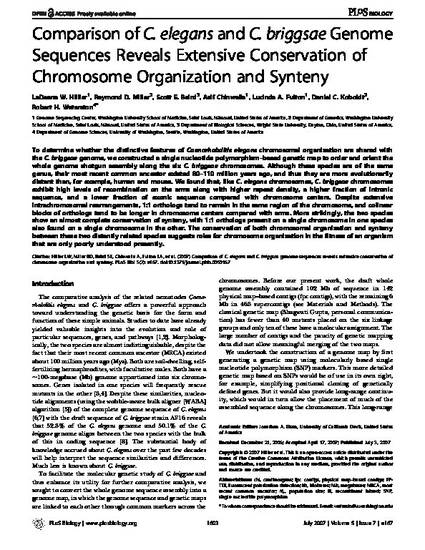
To determine whether the distinctive features of Caenorhabditis elegans chromosomal organization are shared with the C. briggsae genome, we constructed a single nucleotide polymorphism-based genetic map to order and orient the whole genome shotgun assembly along the six C. briggsae chromosomes. Although these species are of the same genus, their most recent common ancestor existed 80-110 million years ago, and thus they are more evolutionarily distant than, for example, human and mouse. We found that, like C. elegans chromosomes, C. briggsae chromosomes exhibit high levels of recombination on the arms along with higher repeat density, a higher fraction of intronic sequence, and a lower fraction of exonic sequence compared with chromosome centers. Despite extensive intrachromosomal rearrangements, 1:1 orthologs tend to remain in the same region of the chromosome, and colinear blocks of orthologs tend to be longer in chromosome centers compared with arms. More strikingly, the two species show an almost complete conservation of synteny, with 1:1 orthologs present on a single chromosome in one species also found on a single chromosome in the other. The conservation of both chromosomal organization and synteny between these two distantly related species suggests roles for chromosome organization in the fitness of an organism that are only poorly understood presently.
Available at: http://works.bepress.com/scott_baird/32/
